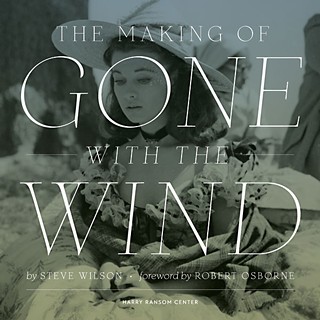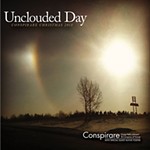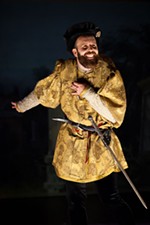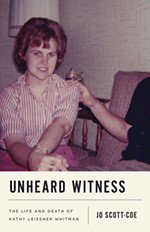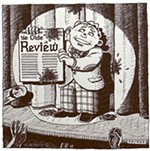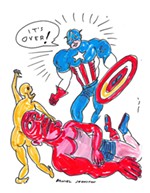Book Review: Epic Feats
This account of the cinematic epic's epic creation is as full of drama and memorable characters as the film itself
Reviewed by Robert Faires, Fri., Dec. 19, 2014
The Making of Gone With the Wind
by Steve Wilson
University of Texas Press, 352pp., $50
Lift the cover and the first thing you see is a sweeping image of a railyard at night, bathed eerily in garish red and orange hues. Gigantic tongues of flame and monstrous coal-black clouds rise behind a line of boxcars, beside which sits the small silhouette of a horse-drawn wagon with one figure hunched at the reins and another standing in front of the horse, pulling it forward. Anyone with even a passing familiarity with the film Gone With the Wind will instantly recognize the scene as the burning of Atlanta. Only this isn't a color still from the finished movie. It's a detail from the extensive storyboard made by production designer William Cameron Menzies before one frame of that historic sequence was shot. And its lush reproduction on the inside front cover of this UT Press edition lets you know just what you're in for here: an account of this cinematic epic's epic creation that is expansive, delves deeply into the filmmaking process, is rendered with tremendous care, and is gobsmackingly gorgeous to behold.
Author Steve Wilson takes the same chronological approach that he employed in curating the Ransom Center exhibition of the same name: following the project season by season from Selznick International Pictures' purchase of the film rights to Margaret Mitchell's novel in the summer of 1936 through the two and a half years of pre-production that included the torturous adaptation of the book into a screenplay, the national hoopla over casting Scarlett, the studio deal cut with Clark Gable to play Rhett, and protests by African-Americans over the treatment of slavery in the story; through the traumatic filming in the winter, spring, and summer of 1939, in which original director George Cukor was fired and replaced by Victor Fleming, who himself had to be replaced briefly by Sam Wood after collapsing from exhaustion two months in; through to the film's lavish premiere in Atlanta in the winter of '39. Those who found Wilson's exhaustive exhibit exhausting will find his book a welcome remedy, allowing them as many hours as they like to pore over the numerous articulate and often witty memos from producer David O. Selznick and his savvy aide Katherine "Kay" Brown (well worth a read; they're as entertaining as they are illuminating); the stunning concept paintings by Menzies, Dorothea Holt, and Joseph McMillan "Mac" Johnson; Walter Plunkett's elegant costume designs; and, of course, the scores of wonderful photos shot on set and behind the scenes.
The Making of Gone With the Wind spins a tale as full of drama, memorable characters, tragedies, and triumphs over seemingly insurmountable odds as the one told on film, which makes it indispensible for not only fans of GWTW and those with an interest in how movies were made in Hollywood's Golden Age, but anyone who loves a good yarn splendidly told.





